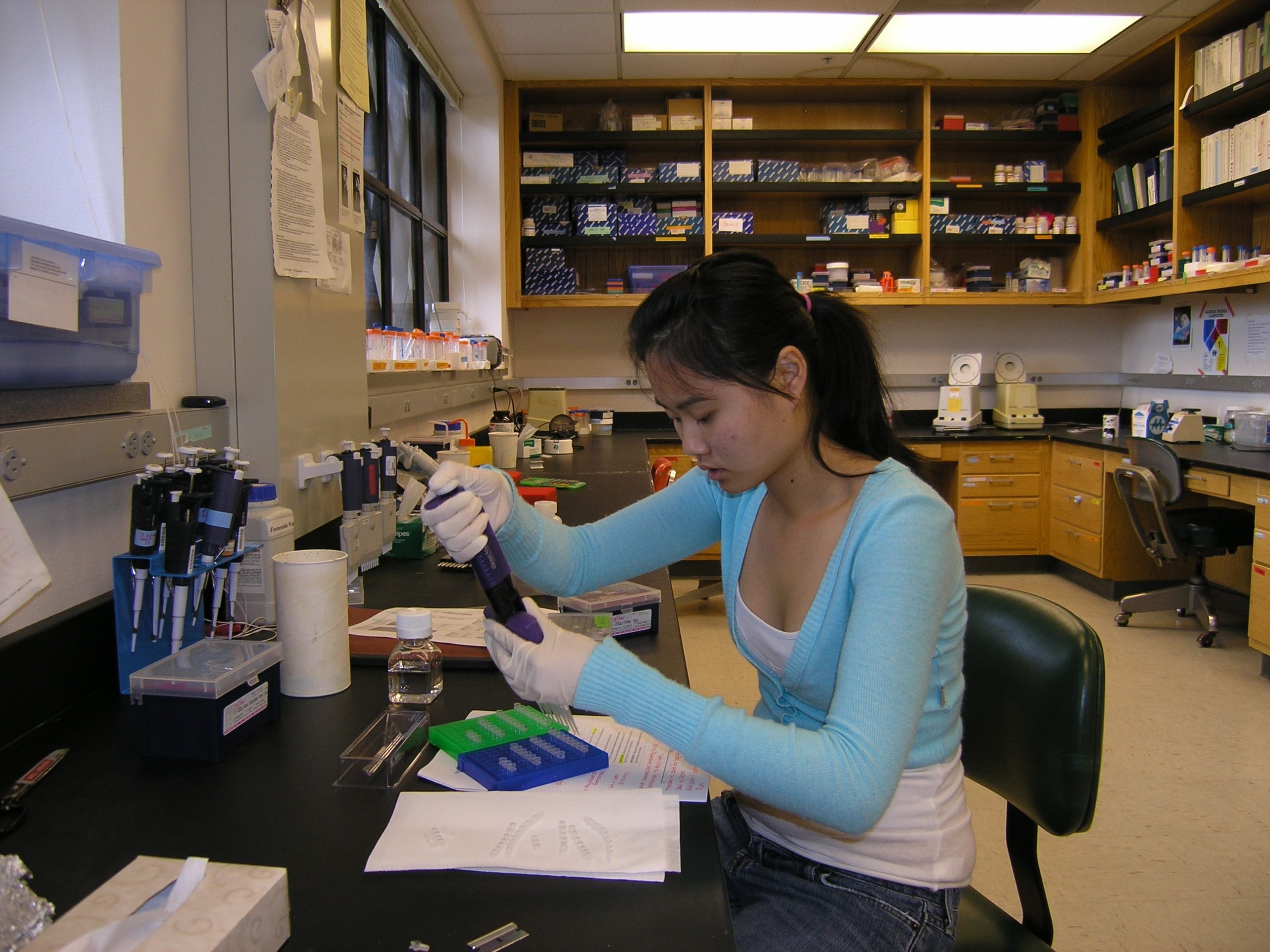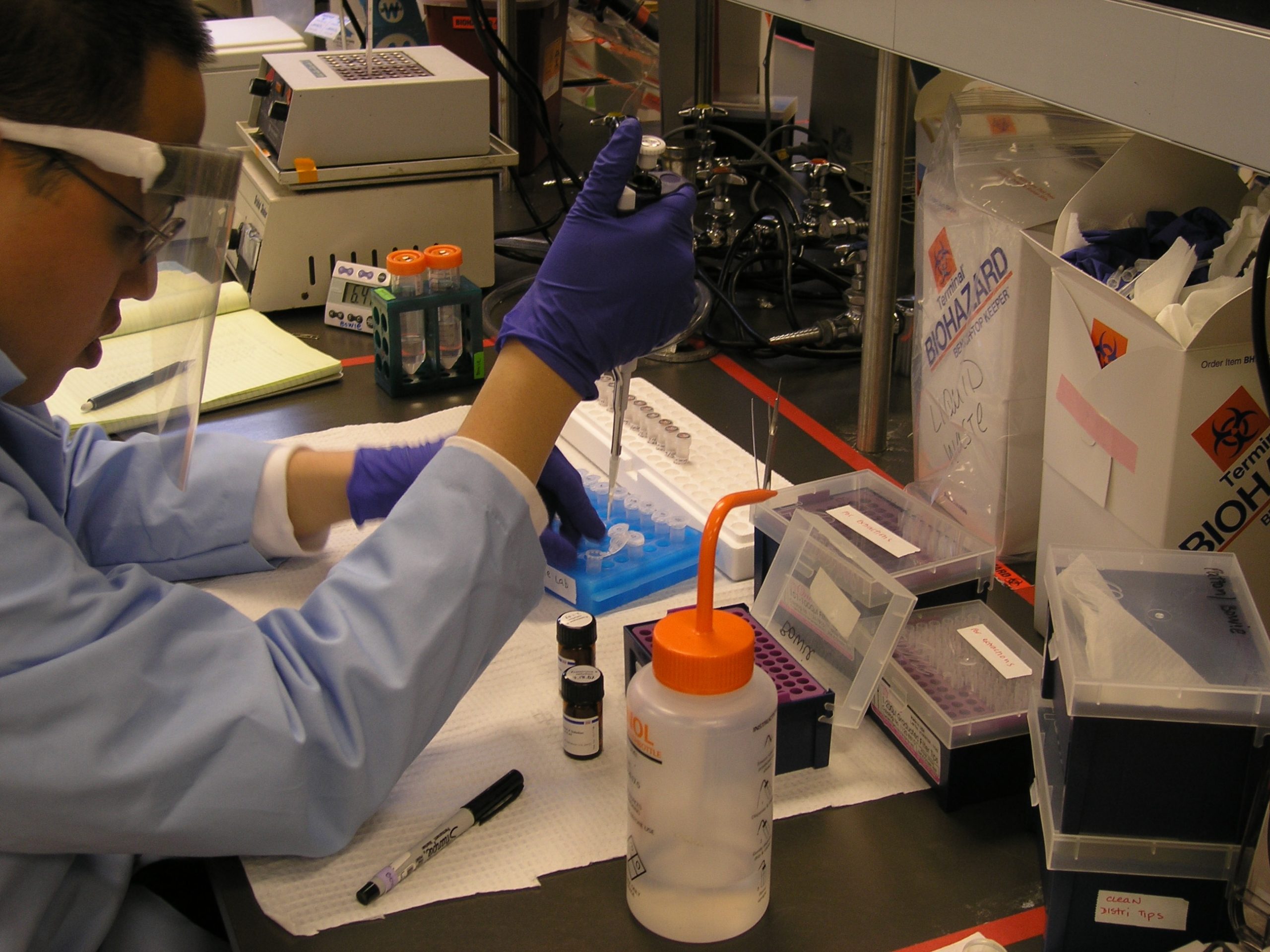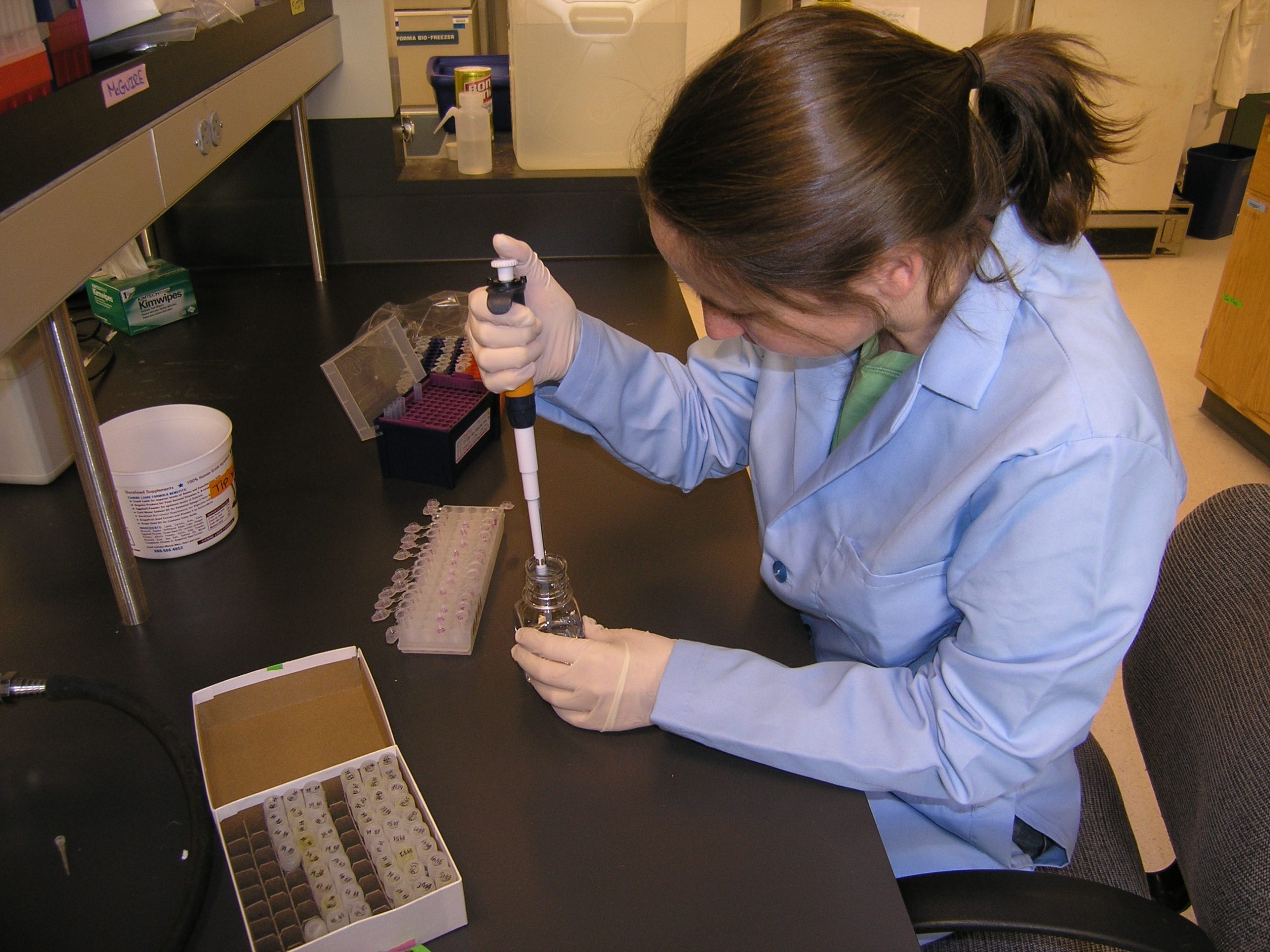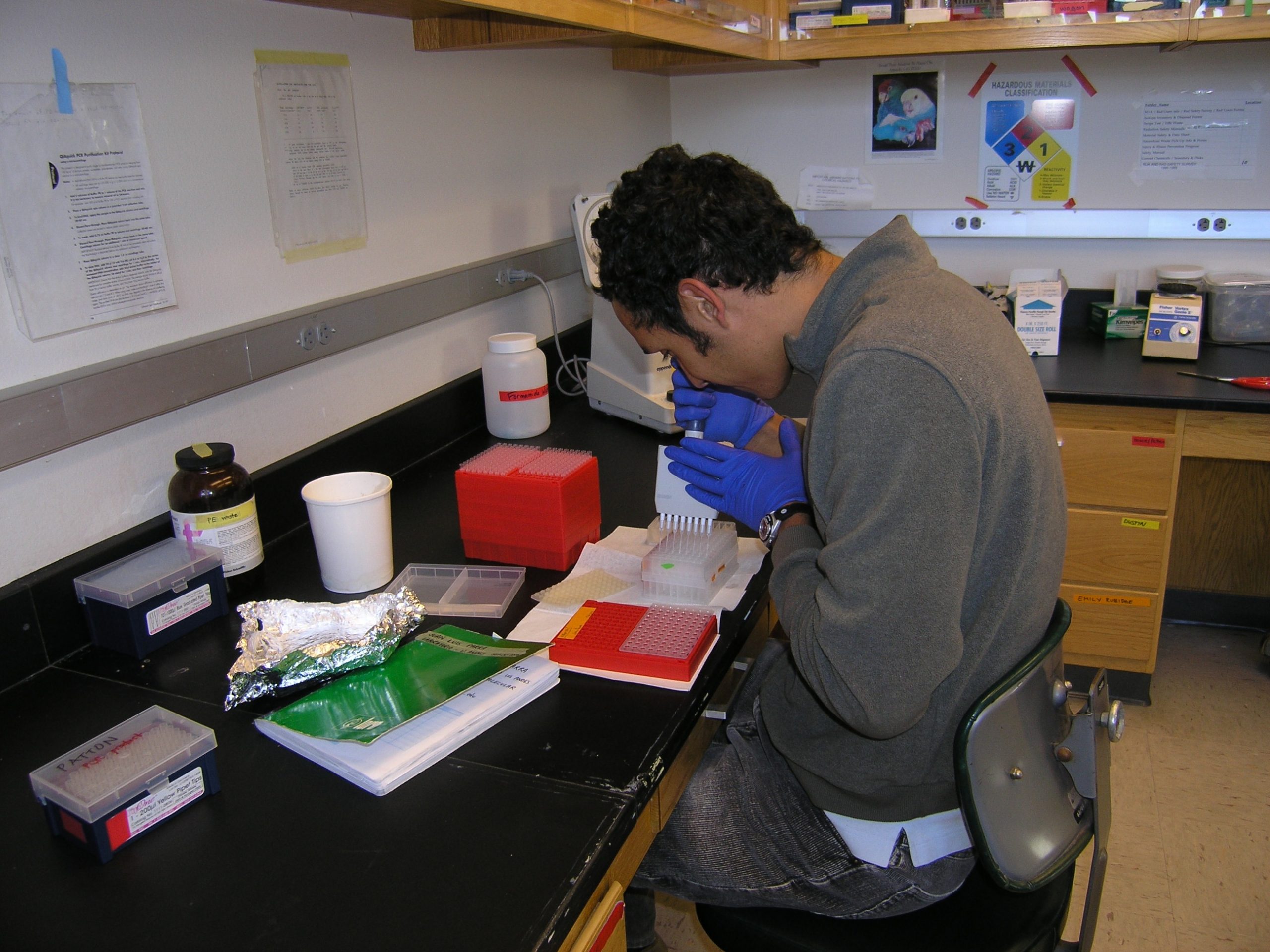 Many researchers in the Museum of Vertebrate Zoology collect genetic data to investigate the evolutionary history of the vertebrates they study. Knowing the genetic relationships of these species helps scientists to better understand patterns of speciation, evolutionary responses to changing environments, types of animal behavior and social systems, determinations of mate choice, routes and timing of migrations, and many other questions of vertebrate natural history.
Many researchers in the Museum of Vertebrate Zoology collect genetic data to investigate the evolutionary history of the vertebrates they study. Knowing the genetic relationships of these species helps scientists to better understand patterns of speciation, evolutionary responses to changing environments, types of animal behavior and social systems, determinations of mate choice, routes and timing of migrations, and many other questions of vertebrate natural history.
The Museum faculty, staff, graduate and undergraduate students, post-doctoral fellows, and visitors share the Evolutionary Genetics Laboratory (EGL), which occupies a suite of rooms on the 4th floor of the VLSB. The lab is equipped for DNA extraction (historical as well as modern samples), RNA extraction, PCR amplification, agarose gel electrophoresis, Sanger sequencing, real-time PCR, microsatellite screening, high-throughput sequencing library construction, capture hybridizations, and preliminary data analysis. Our major items of equipment include a thermocycler array, centrifuges (benchtop, plate, and floor models), a digital imaging system for documenting agarose gels, a Nanodrop spectrophotometer, a Qubit fluorometer, a SpectraMax M2 multimode plate reader, a StepOne Plus real-time instrument, Bioruptor and qSonica sonicators, Agilent Bioanalyzer, Rainin Benchsmart 96-channel pipetting system, and an ABI 3730 48-capillary automated genetic analyzer.
 Bench space and equipment in the EGL lab are open to students, postdocs, visiting researchers, curators, and faculty members in the MVZ and IB, as well as to researchers in outside departments when space is available. Supplies and equipment are shared. There is no bench fee for using the facility or for any equipment (other than the 3730), but there is a one-time $120 on-boarding fee for each new researcher to cover the cost of initial training.
Bench space and equipment in the EGL lab are open to students, postdocs, visiting researchers, curators, and faculty members in the MVZ and IB, as well as to researchers in outside departments when space is available. Supplies and equipment are shared. There is no bench fee for using the facility or for any equipment (other than the 3730), but there is a one-time $120 on-boarding fee for each new researcher to cover the cost of initial training.
Our 3730 instrument is open to all UC Berkeley researchers who wish to prepare their own sequencing or microsatellite reactions for analysis and can fulfill the training requirements to load samples onto the machine. Users are re-charged for 3730 runs on a bimonthly schedule.
We provide a storeroom for our researchers in order to maintain the most commonly used consumables and reagents conveniently on-site. This includes material for DNA and RNA extractions, PCR, Sanger sequencing, and Illumina library preparations (including stranded RNA, genomic DNA, and RAD-seq libraries). Lab users are re-charged for consumables on a bimonthly schedule.
Researchers interested in using the lab in any of the aspects of the EGL outlined above should contact the lab manager Lydia Smith (lydsmith[at]berkeley.edu). Please provide a brief description of your proposed work in the EGL, including estimated duration of the project, expected protocols and major equipment to be used, and your funding source. We can then set up an appointment for a consultation and to begin the first steps on the training sequences.
All researchers working in any capacity in the EGL must complete both the orientation and safety training sequences which include on-line classes, documentation, and in-person training tours. These will be tailored to your particular research needs. You can get a head start on the requirements for each by completing the mandatory items on the EGL_orientation page and EGL_safety page. But please speak to the lab manager before proceeding too far down the list to avoid completing tasks that are not required for your training needs.


